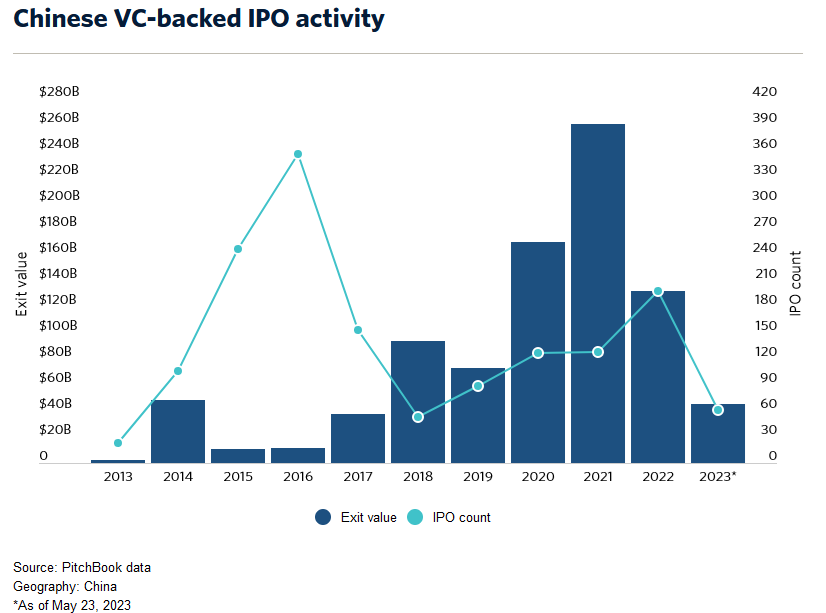Invest in China's Tech Sector After IPO Reforms
 George
George
如何在中国IPO改革后投资科技行业
How to Invest in China's Tech Sector After IPO Reforms
China's tech sector has been under pressure from various factors, such as the US-China trade war, the COVID-19 pandemic, and the regulatory crackdown on some of its biggest players. However, the recent reforms to the country's IPO system may offer new opportunities for investors who are interested in this dynamic and innovative market.
The China Securities Regulatory Commission (CSRC) has adopted a registration-based IPO system for the Shanghai and Shenzhen stock exchanges, which are the two largest in mainland China. This means that companies looking to list on these exchanges no longer need to get approval from the CSRC, but only need to comply with national laws and regulations. The exchanges themselves will grant approval based on disclosure and information quality. The CSRC will also no longer set the price of shares, which will be determined by the market, and the cap on IPO pricing that limited price fluctuations in the first few days of trading has been removed.
These reforms are expected to make the IPO process faster, more transparent, and more market-oriented. They may also encourage more tech companies to list in mainland China, rather than in other countries like the US or Hong Kong. According to PitchBook data, 61 VC-backed Chinese companies have gone public so far this year, raising over $45 billion. Some 39 listed in Q1, a decline of 22% from the previous quarter. However, with the new IPO system in place, this number may increase in the coming quarters.
For investors who want to invest in China's tech sector, this may mean more choices and opportunities. However, it also means more risks and challenges. The tech sector is highly competitive and fast-changing, and some companies may not be able to sustain their growth or profitability after going public. The regulatory environment is also uncertain and evolving, as the Chinese government seeks to balance innovation and social stability. Moreover, the geopolitical tensions between China and the US may affect the access and performance of Chinese tech companies in the global market.
Therefore, investors need to be cautious and selective when investing in China's tech sector. They need to do their due diligence on the companies they are interested in, and evaluate their business models, competitive advantages, growth prospects, financials, governance, and compliance. They also need to diversify their portfolio across different segments and stages of the tech sector, and monitor the market trends and policy changes that may affect their investments.
One possible way to invest in China's tech sector is through exchange-traded funds (ETFs) that track specific indices or themes related to this sector. For example, some ETFs focus on Chinese internet companies, artificial intelligence companies, biotechnology companies, or clean energy companies. These ETFs can provide exposure to a basket of stocks that represent different aspects of China's tech sector, without having to pick individual stocks. However, investors should also be aware of the fees, liquidity, tracking errors, and regulatory risks associated with these ETFs.
Another possible way to invest in China's tech sector is through venture capital (VC) funds that specialize in this sector. These funds can provide access to early-stage or growth-stage tech companies that have high potential but are not yet listed on public markets. These funds can also offer insights and guidance to help these companies grow and succeed. However, investors should also be aware of the high risks, long-term horizons, illiquidity, and lack of transparency associated with these funds.
In conclusion, China's tech sector is a dynamic and innovative market that offers many opportunities for investors who are willing to take risks and challenges. The recent reforms to the country's IPO system may make it easier for more tech companies to go public in mainland China, which may increase the choices and returns for investors. However, investors also need to be cautious and selective when investing in this sector, and use different strategies and tools to diversify their portfolio and mitigate their risks.
中国的科技行业受到了各种因素的压力,比如中美贸易战、新冠疫情、以及对一些最大的企业的监管打击。然而,最近对国内IPO制度的改革可能为对这个充满活力和创新的市场感兴趣的投资者提供了新的机会。
中国证监会(CSRC)已经为上海和深圳证券交易所实施了注册制IPO制度,这两个交易所是中国内地最大的两个。这意味着想要在这些交易所上市的公司不再需要得到CSRC的批准,而只需要遵守国家的法律和法规。交易所本身将根据信息披露和信息质量来授予批准。CSRC也不再设定股票的价格,而由市场决定,而且限制IPO定价在上市后几天内波动的上限也被取消了。
这些改革预计将使IPO过程更快、更透明、更市场化。它们也可能鼓励更多的科技公司在中国内地上市,而不是在其他国家,比如美国或香港。根据PitchBook的数据,今年到目前为止,有61家VC-backed的中国公司上市,筹集了超过450亿美元。其中39家在第一季度上市,比上一季度下降了22%。然而,随着新的IPO制度的实施,这个数字可能会在未来几个季度增加。
对于想要投资中国科技行业的投资者来说,这可能意味着更多的选择和机会。但是,这也意味着更多的风险和挑战。科技行业是高度竞争和快速变化的,一些公司可能无法在上市后保持其增长或盈利能力。监管环境也是不确定和不断发展的,因为中国政府试图平衡创新和社会稳定。此外,中美之间的地缘政治紧张也可能影响中国科技公司在全球市场的准入和表现。
因此,投资者在投资中国科技行业时需要谨慎和挑剔。他们需要对他们感兴趣的公司进行尽职调查,并评估他们的商业模式、竞争优势、增长前景、财务状况、治理和合规情况。他们还需要在科技行业的不同细分和阶段分散他们的投资组合,并监测可能影响他们投资的市场趋势和政策变化。
一种可能的投资中国科技行业的方式是通过跟踪与这个行业相关的特定指数或主题的交易所交易基金(ETF)。例如,一些ETF专注于中国互联网公司、人工智能公司、生物技术公司或清洁能源公司。这些ETF可以提供对代表中国科技行业不同方面的一篮子股票的敞口,而不必挑选个别股票。然而,投资者也应该注意这些ETF相关的费用、流动性、跟踪误差和监管风险。
另一种可能的投资中国科技行业的方式是通过专注于这个行业的风险投资(VC)基金。这些基金可以提供进入早期或成长期科技公司的机会,这些公司有很高的潜力,但还没有在公开市场上市。这些基金也可以提供见解和指导,帮助这些公司成长和成功。然而,投资者也应该注意这些基金相关的高风险、长期视角、缺乏流动性和透明度。
总之,中国科技行业是一个充满活力和创新的市场,为愿意承担风险和挑战的投资者提供了许多机会。中国对国内IPO制度的改革可能使更多科
Subscribe to my newsletter
Read articles from George directly inside your inbox. Subscribe to the newsletter, and don't miss out.
Written by
